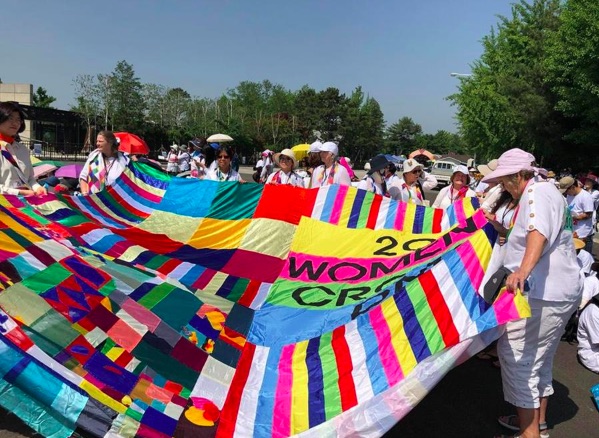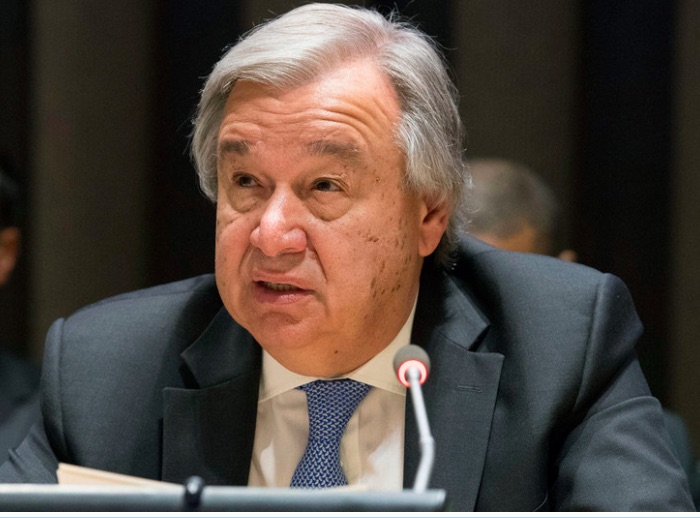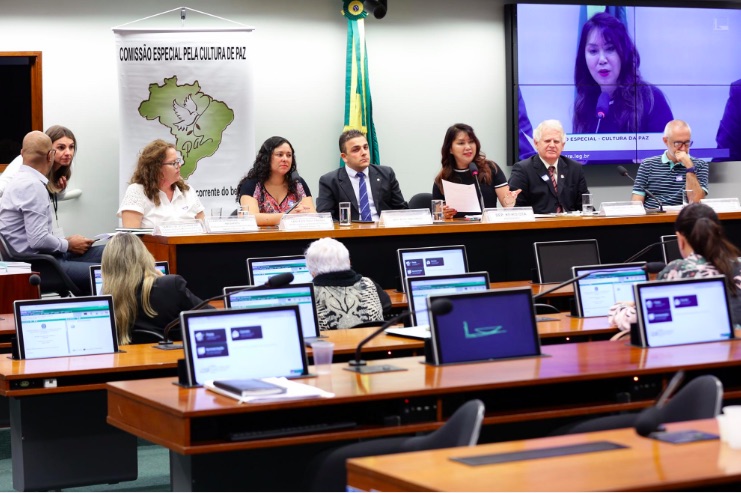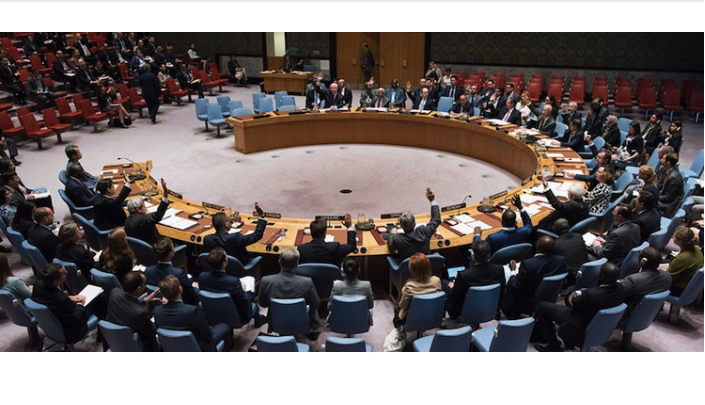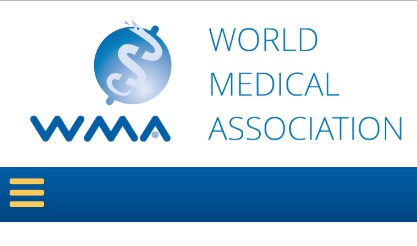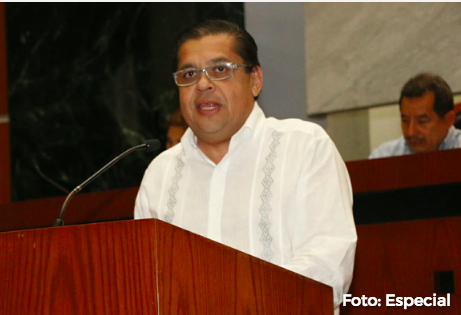DISARMAMENT & SECURITY .
An article from Parliamentarians for Nuclear Non-Proliferation and Disarmament
On May 24, UN Secretary-General Antonio Guterres released Securing our Common Future: An Agenda for Disarmament. May 24 was also Women’s International Day for Peace and Disarmament. PNND women leaders used the occasion to release an appeal Common security for a sustainable and nuclear-weapon-free world.
Governments must make better use of diplomacy, international law and common security mechanisms in order to prevent war and adequately address climate change and nuclear threats, according to an international appeal released in Geneva on May 24, 2018 by women parliamentarians from around the world.
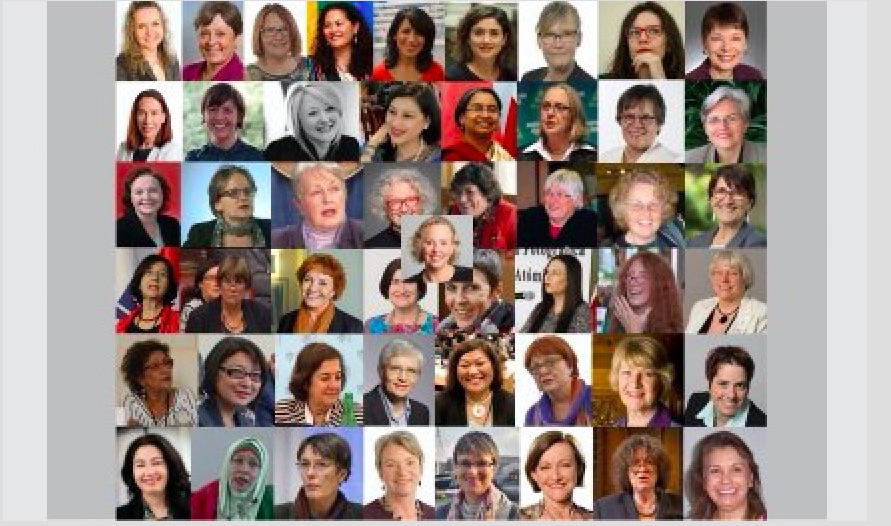
Photo montage: Endorsers of the appeal released on May 24, Women’s International Day for Peace and Disarmament (click on image to enlarge)
The appeal, Common security for a sustainable and nuclear-weapon-free world, was released to commemorate Women’s International Day for Peace and Disarmament and to give support to Securing our Common Future: An Agenda for Disarmament, the new disarmament agenda released in Geneva on May 24 by UN Secretary-General Antonio Guterres.
‘We are deeply concerned about the existential threats to humanity and the environment from climate change, nuclear weapons and unresolved international conflicts, especially those between nuclear-reliant countries,’ said Dr Hedy Fry, MP (Canada), Co-Chair of the Canada Section of PNND and Special Representative on Gender Issues for the Parliamentary Assembly of the Organisation for Security and Cooperation in Europe (OSCE).
‘The withdrawal by the United States from the Iran Nuclear deal and the cancellation of the US/North Korea Summit only adds to these concerns,’ says Dr Fry. ‘As such, we welcome the peace and security initiative launched today by the United Nations Secretary-General – to “pursue disarmament to save humanity, disarmament that saves lives and disarmament for future generations.” ‘
‘The increased threats of nuclear-weapons-use by accident, miscalculation or intent led the Bulletin of the Atomic Scientists earlier this year to move the hands of the Doomsday Clock to 2 Minutes to Midnight,’ says Margret Kiener Nellen MP (Switzerland), President of the Swiss delegation to the OSCE Parliamentary Assembly.
‘Nuclear reliant governments must reverse these trends by taking all weapons systems off high alert, committing to never use nuclear weapons first, and commencing negotiations on the complete prohibition and elimination of nuclear weapons, as urged by the OSCE Parliamentary Assembly.’
The appeal calls on governments, parliaments and civil society to act together to implement these goals.
‘I have joined other women parliamentarians in expressing support for the UN General Assembly’s decision for a high-level conference on disarmament to advance effective measures to build a framework for a nuclear weapon-free world,’ says Linda Duncan MP (Canada), Co-Chair of PNND Canada.
‘As women representatives, we are proud of our home countries and our national identities, but we also recognize a common humanity. We recognize the need to collaborate in building a peaceful, secure, sustainable, and just world.’
(Continued in right column)
Can we abolish all nuclear weapons?
(Continued from left column)
‘Those countries that still rely on nuclear weapons for their security should phase out nuclear deterrence, replacing it with international law, common security mechanisms and verified multilateral disarmament,’ says Baroness Sue Miller (UK), PNND Co-President.
‘The United Nations was established with an array of mechanisms through which nations can resolve conflicts, negotiate disarmament and achieve security through diplomacy not war,’ says Baroness Miller. ‘These have been supplemented by additional common security mechanisms such as the Organisation for Security and Cooperation in Europe. A better use of these mechanisms could help facilitate nuclear disarmament.’
‘The first step is for all nuclear-reliant states to implement the call of the UN Secretary-General to “ensure that the 72-year practice of the non-use of nuclear weapons continues indefinitely and is universally understood to be an inviolable norm,” says Alyn Ware, PNND Global Coordinator.
‘The non-nuclear countries have made an important complementary action to this by negotiating last year a Treaty on the Prohibition of Nuclear Weapons. We look forward to ratification and entry into force of this treaty.’
‘In addition, the nuclear arms race costs over $100 billion annually,’ says Ute Finckh-Krämer (Germany), former Deputy-Chair of the Bundestag Subcommittee on Disarmament and Arms Control. ‘These resources could be better used to reverse climate change, eliminate poverty and fulfill other social and economic needs.’
‘Cities, kantons/states and federal governments in non-nuclear States can play a role in this by ending any investments they may have in corporations manufacturing nuclear weapons and their delivery systems,’ says Barbara Gysi MP (Switzerland). ‘Already some local, regional and national governments have taken such action.’
‘The condition of our world is calling for a new „Entspannungspolitik“, says Uta Zapf (Germany), PNND Past President and former Chair of the Bundestag Subcommitte on Disarmament and Arms Control. ‘The new peace and security initiative of UN Secretary-General Antonio Guterres arrives at the right moment. We have to end the dangerous arms race and we have to press states that rely on nuclear weapons and nuclear deterrence to put an end to these dangerous policies and strive instead for common security and peace.’
‘I call on all countries in the world to support this initiative,’ says Ms Zapf. ‘I ask all countries instead of financing arms races to use the money for the implementation of the Sustainable Development Goals.’
Rama Mani, Member of the World Future Council, is positive that peace and disarmament will unfold as civil society and governments cooperate more. ‘Soon…We shall hear the clattering, as their guns fall to the floor, As their missiles return to their hangars, As our resolve dissolves Their determination to destroy each other. …Soon.’
The statement Common security for a sustainable and nuclear-weapon-free world has been endorsed by legislators from Australia, Austria, Bangladesh, Canada, Chile, Costa Rica, Finland, Germany, Jordan, Kazakhstan, Lichtenstein, Marshall Islands, Mexico, Netherlands, New Zealand, Norway, Portugal, Scotland, Sweden, Switzerland, the United Kingdom and the United States.
On May 23, Linda Duncan MP (Canada) submitted the appeal to the Canadian parliament. Click here to read her introduction speech
